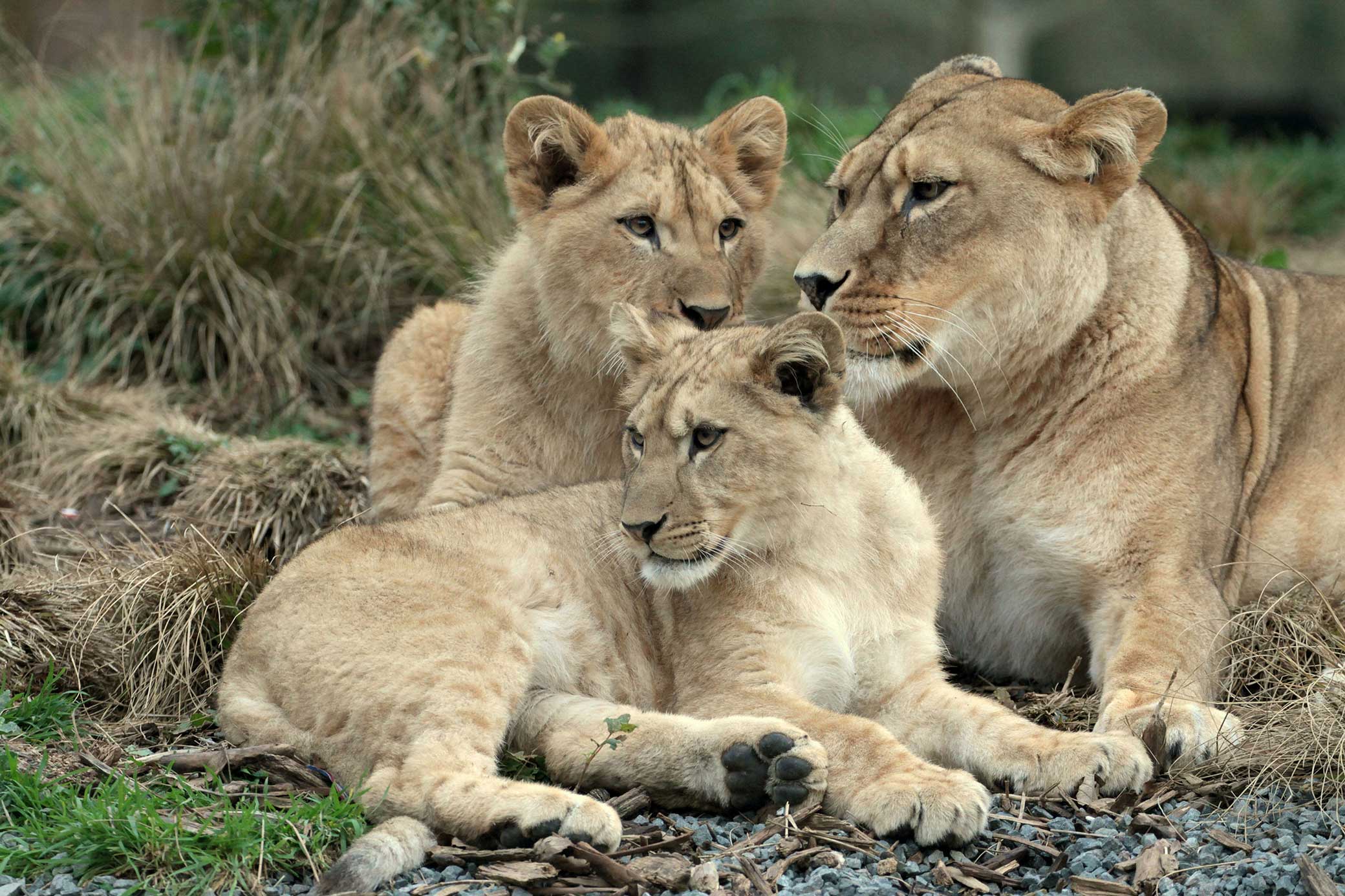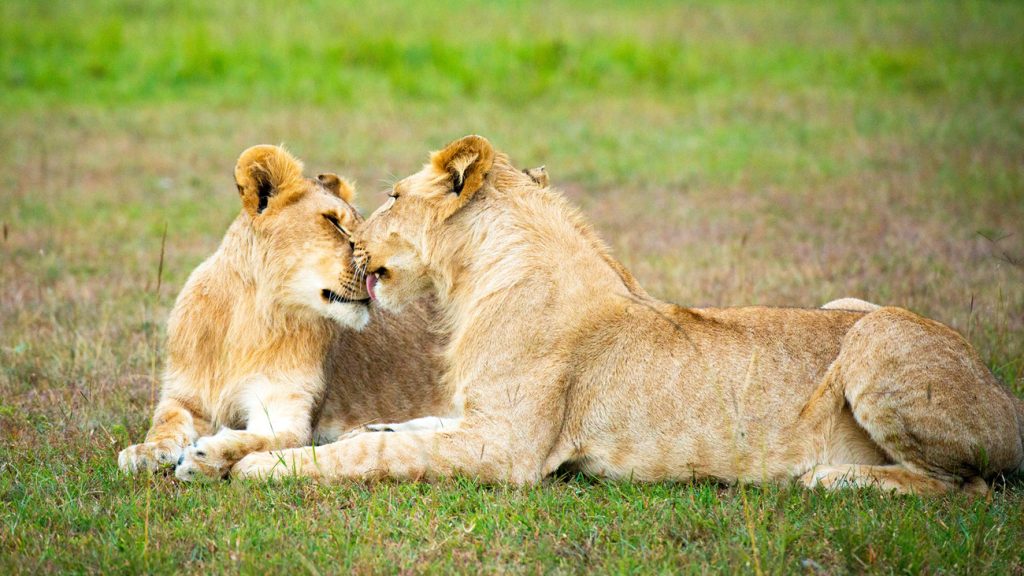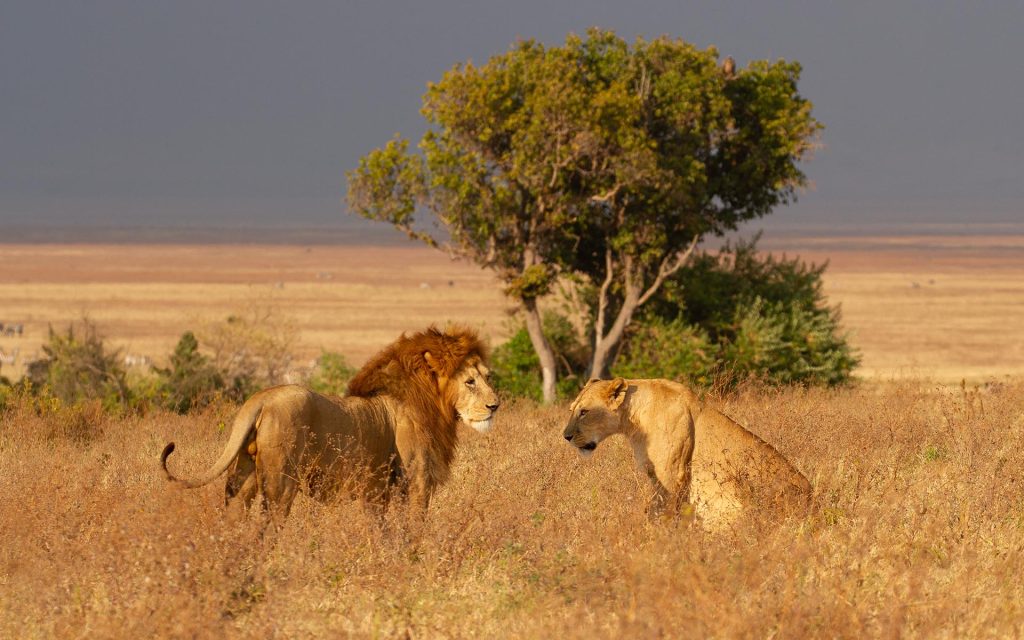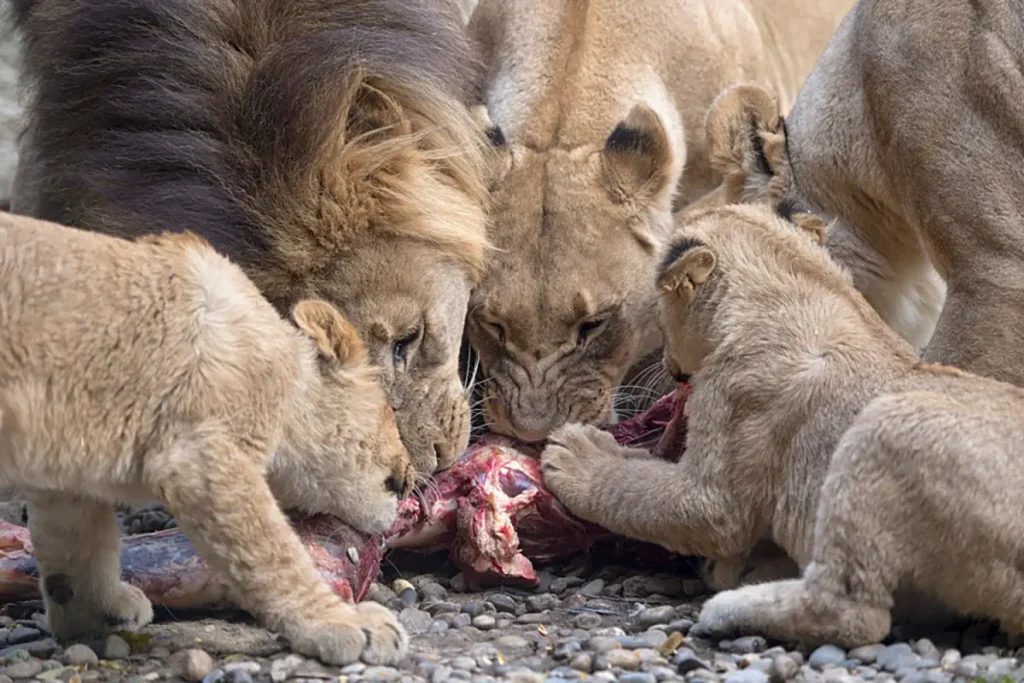
Simply put, imagining a world without Lions feels surreal, especially if you have witnessed one lounging in an open safari vehicle alongside a pride. For thousands of years, lions have been a permanent part of human civilization, acting as symbols of strength and courage.
However, the unfortunate reality is that the lions population has drastically decreased over the years.
Today, the population of lions has vastly changed from a century ago when they were found throughout Africa, the Middle East, and even parts of Europe and Asia. The lions of today are restricted to a tiny fragment of their pre-existing range.
The question of “how many lions are there in the world” now is less of a mathematical problem and more of a sensitive and sad issue.
By the year 2023, it is estimated that the population of wild lions has decreased to approximately 22,000. Although this figure may initially sound respectable, when viewed in comparison to the hundreds of thousands that once freely roamed the world, it becomes distressing.
The majority of these lions are found in sub-Saharan Africa. Tanzania, Kenya, Botswana, and South Africa are notable for having the largest populations with Tanzania alone having over 8000 lions (about 3,500 lions in Serengeti alone). Additionally, there is a small and critically endangered population of Asiatic lions in India’s Gir Forest, with fewer than 700 individuals.
In summary;
The lion population decline is primarily due to habitat loss. As human populations grow, farmland and settlements encroach on lion territory. The open plains and woodlands necessary for lions are shrinking, fragmenting their habitats into smaller, isolated patches.
Humans are a key contributor to this issue. The triggering factor in the killing of lions is the conflict that arises with livestock. As a result, it is common for farmers to take revenge on livestock. Poaching is also a problem, whether it is for lion’s skin and bones, or as a part of the illegal wildlife trade.
Quietly but seriously, the loss of prey is a problem. The population is unable to sustain itself without adequate numbers of lions, zebras, and buffalo to hunt.



Being on the Serengeti or the Maasai Mara gives you a rare opportunity to watch lions, perhaps a pride, relaxing under an acacia tree. You may at the same time think that they are permanently safe. Guides, however, tell of such prides that once dominated certain areas and have mysteriously vanished over the years.
One of the guides in Tanzania was pointing to an open plain and telling me, “Ten years ago, this was home to three prides. Now, only one is left.” That lion’s share of time, this open plain was home to three lion prides gives insight into how they are allowed to wander the planet. It is a quiet moment that makes me realize that each shrinking family tree of lions you spot is on the brink of being endangered.
As apex predators, lions have an immense indirect effect on the vegetation growth as well as the population of herbivores grazing the lands. As much as they are famed for being the ever-watching predators, they happen to be the keystone species that maintain the ecological balance within that trophic level.
Grazing animals such as deer are kept under a certain population level, preventing them from overgrazing the available pasture, thus ensuring grasslands flourish and treasuring their saplings. Their absence leads to avoidable imbalance that in the long run causes devastation from insects to plants.
There is also the cultural weight they carry. Many African communities integrate lions into their traditions, folklore, and even their identity. For tourists, encountering a lion in its natural habitat is often the pinnacle of an African safari. Losing lions would not only be an ecological tragedy, but also a cultural and economic one.
Conservation programs aim to protect lion populations as well as their habitats. National parks and reserves offer protected areas where lions can hunt and roam with minimal human interference.
Community-based conservation programs are also having an impact. In Kenya, for example, some programs incentivize the local communities to shield lions from retaliatory killings in exchange for livestock. Others focus on building livestock enclosures that are predator-proof.
Ecotourism also makes a difference. Each tourist that books a safari and stays in a lodge pays park fees, which helps fund the protection of lions and their habitats.
You may be far from Africa, but organizations such as the Lion Recovery Fund, Panthera, and the African Wildlife Foundation are dedicated to lion conservation. You can also help in the cause by practicing responsible tourism: While in Africa, patronize conservation-friendly operators and lodges.
The population number can be seen as a lion’s glass half full, particularly with responsible protection and involvement from the public. Some parts of Africa are benefiting from this already, such as select South African and Namibian reserves, which have successfully implemented reintroduction programs to restore lion populations to areas they had once inhabited.
The long road to recovery is complex as lions are known for their slow reproduction rates, which can lead to stagnation in population growth for years even in the best environments.
A wild population of twenty thousand lions may be concerning. However, when you measure their existence alongside the estimation of their population during the golden years of their existence, the number could be seen as a middle ground for a species that roamed over a continent.
If you catch sight of a lioness surveying the land or a male lion releasing a deep, echoing roar, you’re witnessing a moment in time few will ever encounter. Consider how you, personally, could help protect the answer to the question in fifty years, ensuring the number is larger, rather than smaller.

Lorem ipsum dolor sit amet, consectetur adipiscing elit. Ut elit tellus, luctus nec ullamcorper mattis, pulvinar dapibus leo.
GET A QUOTE
Get SEO metrics of any website or URL.

Explore Tanzania, Kenya, and Uganda in unmatched luxury.
Witness the Great Migration from exclusive viewpoints, relax in handpicked lodges, and savor gourmet dining under African skies.
From the Serengeti’s plains to Uganda’s gorilla highlands, every moment is curated for comfort and wonder.
Group Safaris
How we Work
Our Journeys
Flying Safaris
Conservation & Community
Contact Us
Honey Moon Safaris
Balloon Safaris
Family Safaris
Serengeti
Ngorongoro Crater
Maasai Mara
Bwindi Impenetrable
Volcanoes
Tarangire
Lake Nakuru
Kibale Forest
Lake Manyara
Arusha NP
Nairobi NP
About Friendly Safaris
How we Work
Our Journeys
The Team
Conservation & Community
Contact Us
Payment Details
Terms & Condition
FAQs
DMC
Start Planning